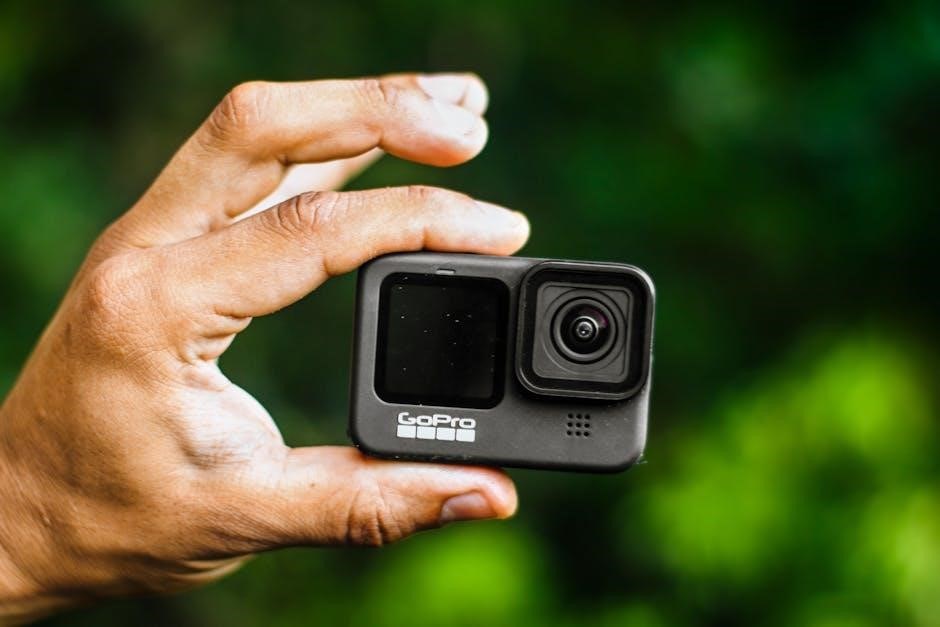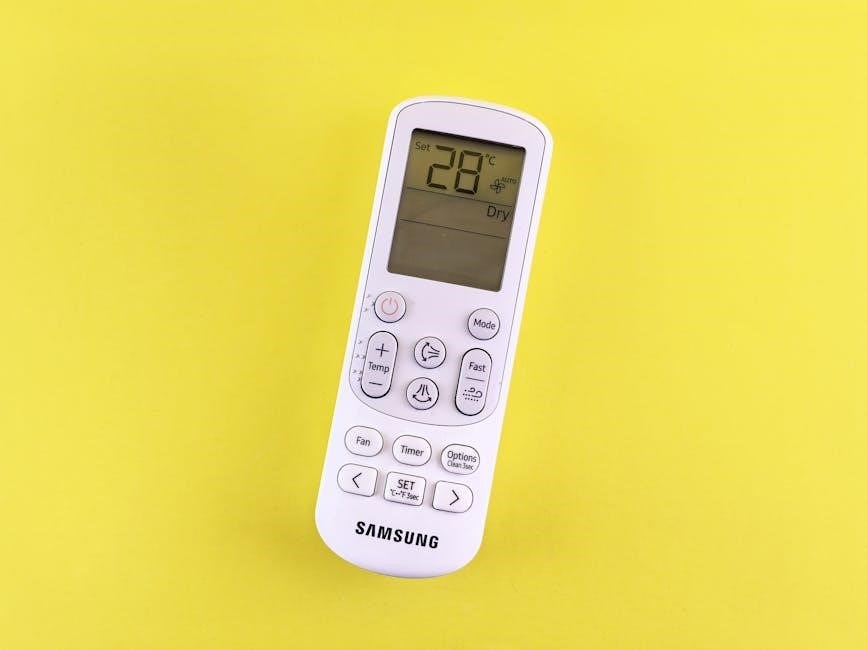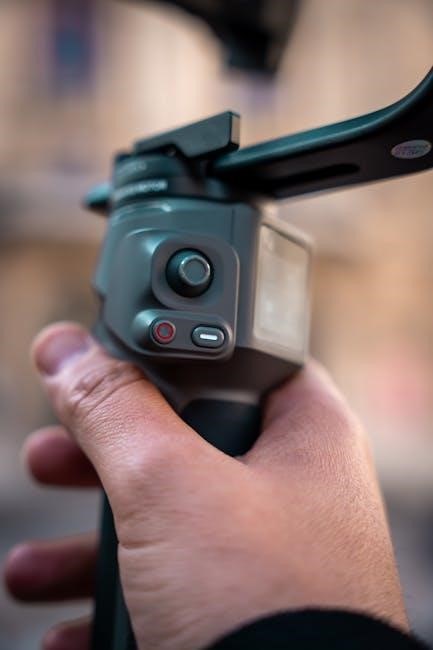Vivint Thermostat User Manual: Comprehensive Guide
Welcome! This comprehensive guide provides safety information, installation, reset, inclusion/exclusion, association, and troubleshooting instructions for your Vivint thermostat. Learn how to maximize your smart home system and ensure seamless integration with your HVAC. This manual will help you fully utilize its features.
The Vivint Smart Thermostat is a key component of the Vivint Smart Home system, designed to offer homeowners enhanced control over their home’s climate. As part of a broader ecosystem, the thermostat works in conjunction with your security system and sensors to intelligently manage heating and cooling based on your presence, activities, and preferences. This integration allows for automated adjustments that optimize comfort while conserving energy.
This advanced thermostat features a user-friendly touchscreen interface, making it simple to set and adjust temperatures. It’s also compatible with Z-Wave networks, enabling seamless operation with other Z-Wave certified devices. The Vivint Smart Thermostat learns your habits and adapts accordingly, ensuring your home is always at the perfect temperature. It contributes to energy savings by reducing usage when you’re away or asleep. This smart device is more than just a thermostat; it’s a smart way to manage your home’s climate.
The thermostat is designed for easy installation and integration with your existing Vivint system. This user manual will guide you through the setup process, from mounting the device to connecting it to your panel.
Benefits of Using a Vivint Smart Thermostat

The Vivint Smart Thermostat offers a multitude of benefits that enhance both comfort and convenience within your home. One of the primary advantages is its ability to integrate seamlessly with your existing Vivint Smart Home system. This integration allows the thermostat to respond intelligently to various factors, such as your security system status, sensor data, and personal preferences. The device automatically adjusts the temperature settings based on whether you are home, away, asleep, or on vacation, ensuring optimal energy usage.
Beyond energy efficiency, the Vivint Smart Thermostat provides unparalleled convenience. Its user-friendly touchscreen interface makes it easy to manually adjust the temperature or program custom schedules. Remote access through the Vivint app enables you to control your home’s climate from anywhere, ensuring a comfortable environment upon your return. The thermostat’s learning capabilities allow it to adapt to your habits, creating a personalized heating and cooling plan that maximizes comfort while minimizing energy waste. By integrating seamlessly with other smart home devices, the Vivint Smart Thermostat enhances overall home automation.
Saving on Heating and Cooling Bills
One of the most compelling reasons to invest in a Vivint Smart Thermostat is its potential to significantly reduce your heating and cooling expenses. Traditional thermostats often maintain a constant temperature, regardless of whether anyone is home, leading to wasted energy and higher bills. The Vivint Smart Thermostat addresses this issue through its intelligent automation features. It learns your daily routines and automatically adjusts the temperature accordingly, ensuring energy is only used when needed.
A key factor in saving money is the thermostat’s ability to integrate with your Vivint security system. When the system is armed in “away” mode, the thermostat automatically lowers the temperature in the winter or raises it in the summer, preventing unnecessary energy consumption. Furthermore, the thermostat’s vacation mode allows you to set a specific temperature while you’re away for extended periods, maximizing energy savings. Studies have shown that using a smart thermostat like Vivint’s can result in savings of up to 12% on heating and cooling bills, making it a worthwhile investment.
Auto-Adjusting Features for Energy Efficiency
The Vivint Smart Thermostat excels in energy efficiency, primarily due to its advanced auto-adjusting capabilities. These features enable the thermostat to intelligently manage your home’s temperature, optimizing energy consumption without sacrificing comfort. A cornerstone of this efficiency is the thermostat’s ability to learn your habits and preferences. By tracking your daily routines, the thermostat can predict when you’re likely to be home, asleep, or away and adjust the temperature accordingly.
Geofencing technology is also used to optimize energy usage. Using your smartphone’s location, the thermostat can detect when you’re approaching home and begin pre-heating or cooling the house, ensuring a comfortable environment upon your arrival. This eliminates the need to leave the HVAC system running unnecessarily while you’re away. Furthermore, the Vivint system integrates with door and window sensors, further enhancing energy efficiency. If a door or window is left open, the thermostat can automatically pause the HVAC system to prevent energy waste. These auto-adjusting features work together to provide a seamless and energy-conscious climate control experience.
Vivint Thermostat Installation Guide
Before commencing the installation of your Vivint Smart Thermostat, it’s crucial to carefully review these instructions. Begin by ensuring that you have all the necessary tools and components, including a screwdriver, drill, and the provided mounting hardware. It’s imperative to disconnect power to your HVAC system at the circuit breaker to prevent electrical shock during the installation process. Carefully remove your old thermostat, labeling each wire as you disconnect it to ensure accurate reconnection with the new Vivint thermostat.
Refer to the wiring diagrams included in this manual to match the labeled wires to the corresponding terminals on the Vivint thermostat base plate. Once the wiring is properly connected, securely mount the base plate to the wall using the provided screws and anchors. Attach the thermostat to the base plate, ensuring it clicks into place. Finally, restore power to your HVAC system and follow the on-screen prompts to configure the thermostat settings and connect it to your Vivint Smart Home system. Proper installation is key to optimal performance and seamless integration with your smart home setup.

Mounting the Thermostat
After successfully wiring your Vivint thermostat, the next critical step is securely mounting it to the wall. Begin by positioning the thermostat base plate over the existing hole, ensuring it covers the area aesthetically. Use a pencil to mark the locations for the mounting screws through the designated holes on the base plate. If you’re mounting on drywall, drill pilot holes at the marked locations using a drill bit suitable for the provided plastic anchors. Insert the plastic anchors into the pilot holes to provide a secure hold for the screws.
Align the thermostat base plate with the anchors and use the provided screws to attach it firmly to the wall. Ensure the base plate is level for a professional appearance. Once the base plate is securely mounted, carefully attach the thermostat unit to the base plate, ensuring it clicks or snaps into place according to the manufacturer’s instructions. Double-check that the thermostat is securely attached and level before proceeding with the configuration process. A properly mounted thermostat ensures accurate temperature readings and reliable performance.
Wiring Diagrams and Wire Reference
Understanding the wiring of your Vivint thermostat is crucial for a successful installation. Before disconnecting any wires from your old thermostat, carefully label each wire to avoid confusion during the new installation. Refer to the wiring diagrams provided in this manual to identify the corresponding terminals on your Vivint thermostat. The diagrams illustrate common wiring configurations for various HVAC systems, ensuring compatibility with your setup.
The wire reference table outlines the standard color codes and their corresponding functions, such as red for power (Rh or Rc), white for heat (W), yellow for cooling (Y), and green for fan (G). Carefully match the labeled wires from your existing thermostat to the appropriate terminals on the Vivint thermostat according to the wiring diagram. If you encounter any unfamiliar wiring or have questions about your specific HVAC system, consult a qualified HVAC technician or contact Vivint support for assistance. Accurate wiring is essential for proper thermostat operation and preventing damage to your HVAC system.
Connecting to the Panel (Classic Inclusion)
To integrate your Vivint thermostat with your Vivint Smart Home system, you’ll need to connect it to the panel using the classic inclusion method. The Vivint Element Thermostat is a Z-Wave compliant thermostat, allowing it to communicate wirelessly with other Z-Wave certified devices in your network. This seamless integration enables you to control your thermostat remotely and automate your home’s climate settings.

To begin, ensure your Vivint panel is in inclusion mode. Typically, this involves navigating to the settings menu and selecting the option to add a new device. On the thermostat, initiate the inclusion process by following the specific instructions for your model. This may involve pressing and holding a button or entering a specific code. Once the panel detects the thermostat, follow the on-screen prompts to complete the connection. After successful inclusion, the thermostat will appear in your Vivint app, allowing you to manage its settings and create custom schedules.
Z-Wave Network Compatibility
The Vivint thermostat leverages Z-Wave technology for seamless integration within your smart home ecosystem. Z-Wave is a wireless communication protocol designed for home automation, enabling devices to communicate with each other and a central hub. The Vivint Element Thermostat, being Z-Wave compliant, can be operated within any Z-Wave network alongside other certified devices from various manufacturers, enhancing interoperability.
Understanding Z-Wave compatibility ensures optimal performance and expands the possibilities for your smart home setup. With Z-Wave, your Vivint thermostat can communicate with other devices like door sensors, security systems, and lighting controls, creating a unified and automated environment. This allows for advanced features such as automatically adjusting the temperature based on occupancy or creating custom scenes that synchronize lighting and climate control. Ensuring your other smart home devices are also Z-Wave certified will maximize the functionality and convenience of your Vivint thermostat within your connected home.
Operating the Vivint Thermostat
Operating your Vivint Thermostat is straightforward, offering multiple control options for your convenience. The primary interface is the touchscreen, providing easy access to temperature adjustments, scheduling, and settings. The home screen displays the current temperature and allows you to manually adjust the setpoint by touching the up or down arrows. For more detailed control, navigate to the menu to access scheduling options.
Schedules can be customized to automatically adjust the temperature based on your daily routine, ensuring energy efficiency and comfort. You can set different temperatures for different times of the day, such as a cooler temperature while you’re away or a warmer temperature when you’re home. In addition to manual and scheduled control, your Vivint Thermostat can also be controlled remotely via the Vivint app. This allows you to adjust the temperature from anywhere, ensuring your home is always comfortable upon your return.
Manual Screen Control

The manual screen control on your Vivint Thermostat provides immediate and temporary adjustments to your home’s temperature settings. From the home screen, you can easily increase or decrease the temperature using the up and down arrow icons. These adjustments override any scheduled settings for a specified duration or until the next scheduled event.
To access additional manual control options, navigate to the main menu on the thermostat’s touchscreen. Here, you can set a temporary hold, which maintains the adjusted temperature until you manually cancel it. This is particularly useful when you have unexpected changes to your schedule or when you want to ensure a consistent temperature for a specific period. The manual screen also displays the current operating mode, such as heat, cool, or auto, allowing you to quickly switch between modes as needed.
Troubleshooting Common Issues
Encountering issues with your Vivint Thermostat can be frustrating, but many common problems can be resolved with simple troubleshooting steps. One frequent issue is the thermostat not connecting to the Vivint panel. Ensure that the thermostat is within range of the panel and that both devices are powered on. Restarting both devices can often resolve connectivity problems.
Another common concern is inaccurate temperature readings. Make sure the thermostat is not exposed to direct sunlight or drafts, which can affect its accuracy. Recalibrating the thermostat, if the option is available in the settings menu, can also help. If the thermostat is not responding to temperature adjustments, check the wiring connections to ensure they are secure and properly connected. Additionally, verify that the system is set to the correct mode (heat, cool, or auto) and that the desired temperature is within a reasonable range. If these steps do not resolve the issue, consult Vivint support for further assistance.
Reset and Exclusion Instructions
When troubleshooting or reconfiguring your Vivint Thermostat, you might need to reset it or exclude it from your Z-Wave network. To reset the thermostat, begin by locating the reset button, typically found on the side or back of the device. Press and hold the reset button for approximately 6-10 seconds. The screen may flash or display a reset confirmation message.
To exclude the thermostat from your Z-Wave network, first, put your Vivint panel into exclusion mode. Navigate to the Z-Wave settings on your panel and select the option to remove a device. Then, on the thermostat, press and hold the side button for about 6-10 seconds. The screen will indicate when the exclusion process is complete. This will remove the thermostat from the network, allowing you to re-add it or connect it to a different system. Always consult the panel’s user guide for specific instructions.




Leave a Reply
You must be logged in to post a comment.